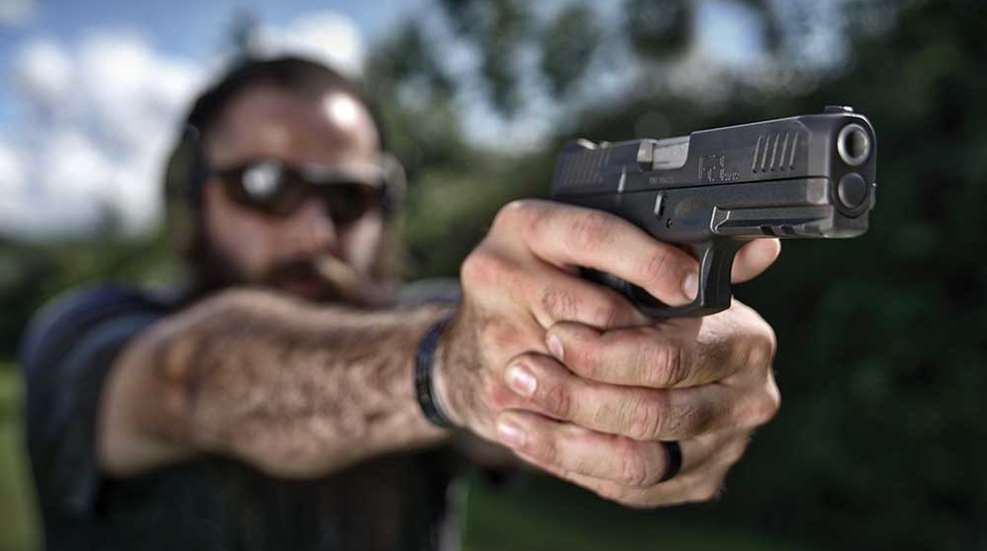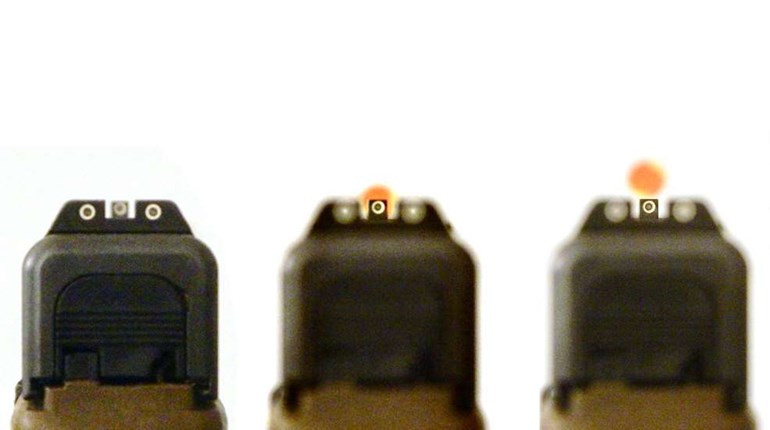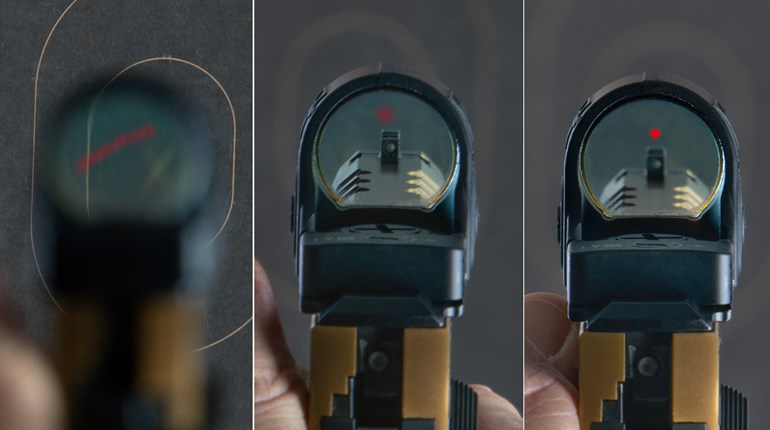
The ability to demonstrate your shooting skills on demand is called ‘performance shooting.’ In a firearm competition, you place full trust in your skills to win. In combat, (aka ‘defensive shooting’) you entrust your very life to your skills.
Whether applied in combat or competition, performance shooting demands a baseline skill upon which you can fully rely. If you are training to be a better shooter, then you are working to raise your skill level. If not, then you are happy with where you are at this very moment entrusting your skill.
Those who are committed to raising their shooting skills are invited to run through the ‘performance shooting gauntlet’ of skills development. To develop, set and ultimately trust your default skill, there are three performance training phases to consider: your mechanical ability, your repeatability, and your ability to perform cold.
Mechanical Ability
The first phase is the ‘can you do it?’ phase. Do you possess the physiology and mechanical ability to perform a specific task within an objective testing, qualification or a set of standards?
For example, the challenge is to make round placement in an ‘A-box’ (designated target center – can be upper thoracic on an option target for combat application or official IPSC/ IDPA competition targets) on a target (steel or paper) set up at least at the 10-yard line. The task at hand is: can you bring your muzzle up to alignment and drill two rounds in less than two seconds?
The phase one answer to this question is to first stand about 10 yards from the berm only, no target, just shooting into the backstop. Using only a shot timer for a ‘go’ signal, run the drill. If you do not have the mechanical ability to deliver two rounds in under two seconds into the berm without a target, then your chances of performing that same task with a target are slim to none.
If you’re relatively close to performing the task at the berm (without a target), maybe 2.5 seconds, then you simply spend a little more trigger time at the berm and gain better control so that you can get yourself under that par time.
Once you can do this is the allotted time then you can then check the mechanical ability box and move on to the actual target.
Repeatability
Knowing that you possess the mechanical ability to perform the task held to the time requirement, the second phase challenge is to hold yourself to the accuracy requirement.
Setting up in front of the 10-yard line target, the task is to place two rounds within the target A-box in under two seconds. If you can do this, then you have proven that you have the skill to perform the task. However, the litmus test of shooting performance is repeatability.
Looking at it from the angle of competition standards, if you can repeat it on demand about 80 to 85 percent of the time then you can check the repeatability box. Viewing it from a combative application exactly what percentage would you trust your life to? Is it 60, 70, 85 percent or more? Well, of course this is a personal decision and only you can make that call.
However, whatever you decide, that percentage is held to both set speed and accuracy standards. If you cannot find that repeatability, let’s say that you cannot meet the time requirement, then step it back to your mechanical ability. Go back the berm only with no target and bring your mechanical times down below the requirement.
When you have moved that performance time down, then go back to your repeatability and dial in your target accuracy. If you can, in fact, perform the same task about eight out of ten times and within the speed and accuracy standards, then you can happily check the repeatability box.
Cold Shot
The last and final default skills test phase of performance is running the drill cold. Prior to any dry-fire, warm-up or otherwise handling the gun (other than verifying that it’s loaded with one in the chamber), set up the exact same drill.
Holding yourself to the same time and accuracy standards, run the drill cold. If you fail to perform the task cold, then you know there’s still some work needed at the repeatability phase.
If you cannot shoot it cold, let’s say that you are meeting the time requirement but not the accuracy requirement, then step it back to your repeatability drilling. Go back to your training regimen and have your body to teach you what it takes to dial in your skill to meet that accuracy requirement.
If you step onto the range for the first time that day and perform that task on demand cold, then you have acquired that requisite skill cold.
After checking off the mechanical ability box, the repeatability box and the cold shot box, you can now rest comfortably assured by your percentages that you have found your default skill level – one that you can fully trust and perform on demand.



































